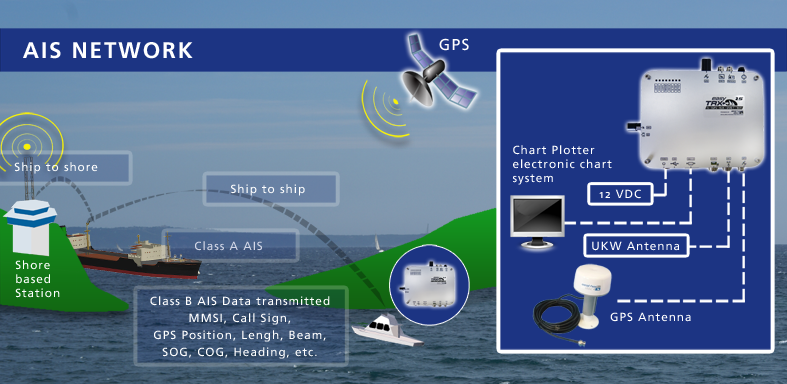AIS

Automatic Identification System
STANDARD AIS
- AIS Data
- Dynamic Reports
- Static Reports
- AIS Presentation
- Real Size
- Heading
- AIS Messaging
- Safety Related Messages
- Assign Report Rate
- Interrogation
SECURE AIS
Outstanding technical solution with secure communication on a dedicated channel
- No negative impact on the normal AIS traffic, which is a problem with systems using standard binary messages
- No limitations on the throughput of data – the utilization of the available bandwidth is fully user controlled
- The secure functionality is embedded in the mobile AIS transponder products, no external application required
- Support for the secure solution is available for all AIS products, including mobile transponders, base stations, network and presentation systems
MOBILE UNITS VIA SECURE AIS
- A significant amount of commercial vessels are now equipped with AIS transponders
- Qualified operators may want to receive open AIS data but may not want to expose themselves to other AIS users
- Open and encrypted information in one system – ”See without being seen”
- Low cost “IFF functionality”
- Offers a two way data link for generic data communication, e.g. transfer of target list or mission data
AIRBORNE AIS
Main Features
- Full transceiver functionality, the transmission capability makes it possible to interrogate specific vessels.
- Selectable level of AIS operational mode (Autonomous transmission, User initiated transmission or Receive only)
- ARINC 429 interface for TSO approved GPS.
- Embedded DSC support for reception and transmission of any DSC symbols.
- Easy configuration and status check by Windows based configuration software.
Applications
- Search and Rescue (SAR); locate vessels in distress and communicate with them while help is on the way.
- Monitoring of Surface Traffic; to be able to keep track of AIS equipped vessels and their destinations.
- Maritime Surveillance/Coast Guard Patrol; together with radar systems, naval authorities can find vessels without AIS or with faulty AIS parameters, thus increasing security.
- Fleet Management; to keep track of a fleet of helicopters.
- Mission Control and Coordination; supports SAR and military operations involving several helicopters and vessels.




